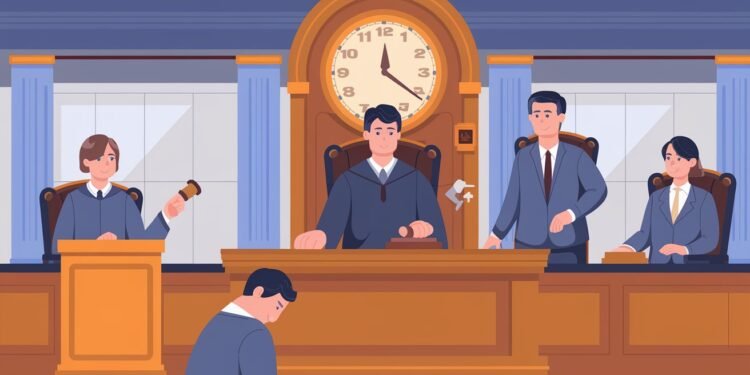S M Nawaz Ah 4th-year 7th Semester B.B.A. LL.B. (Hons.) Chandigarh University, Mohali, Punjab.
ABSTRACT
The meaning of the word ‘ostensible’ is deceptive; it is something that looks real, but in fact, it is not. The ostensible owner of a property is thus not a real owner of the property. He can only offer himself as the real owner to third parties or the public in a large sense. The beneficial owner of a property has all the legal facilities of a property, but he is not the true owner of it. These rights are obtained by him through the intervention of the real owner, either implicitly or with expressed consent. He is the whole but not the absolute owner of property, while the absolute owner or qualified owner of property is the real owner. The doctrine of transferring a property by ostensible owner is in fact an exception to the maxim ‘nemo dat quod non habet’, which means no one can pass a title that he himself does not possess. This paper will be expounding on the ostensible owner and will be dancing on the rights and duties of the ostensible owner of property in detail. The purpose of the paper will therefore be to highlight the justification of the ostensible owner and show how such a concept is backed by statutory and jurisprudential methods, given the conditions and specifications in principles and laws. Section 41 of the Transfer of Property Act thus provides that when a person acts on behalf of another person who is interested in an immovable property, the former person is deemed to be the apparent owner of the property. At this point, he has all the badges of ownership, such as the right to possession, the title, the documents of title, the goodwill, and the like; he also has the right to transfer the property to the transferee for consideration. The transferee should deal bona fide and reasonably suppose that the person with whom he deals is the true owner of such property.
Keywords: Ostensible Owner, Property, Section 41 of T.P.A., Absolute Owner, Nemo dat quod habet.
INTRODUCTION
The Doctrine of Ostensible Owner is one of the vital principles of the property law propounded in Section 41 of the Transfer of Property Act, 1882, by which the validity of the sale transactions curtained under the mere show of ownership is safeguarded. This doctrine becomes of paramount importance when a person who is not the owner of the property seems to be in a position to transfer ownership of the property. It protects the rights of innocent persons who rely on this appearance and carry out transactions in properties, thus ensuring the purity and order of property business transactions.
In India, the Transfer of Property Act, 1882, is the legislation that governs the transfer of properties. Section 41 is devoted to more or less similar situations, with the given ownership referring to the actual one. By virtue of this section, a transfer made by a person who holds a document of title but is not the real owner of the transfer is valid if the transferee is a bona fide purchaser for value without actual notice of the equities. The rationale behind the adoption of this provision will be to afford buyers adequate protection where later assertions of ownership defeat their acquisitions. The doctrine assists in the development of reliability and credibility in property transactions because apparent ownership of property can be relied on.
In the context of analysing the legal framework of the Doctrine of Ostensible Owner, this article carries out the analysis within the framework of the Transfer of Property Act. It identifies major case laws in determining this doctrine, explains the principles thereof, and explains its practical applications and difficulties. In this article, efforts are made to synthesize information on how this doctrine works so as to prevent extreme construction that hampers genuine transactions and keeps legal risks in property dealings under control.
ESSENTIALS OF SECTION 41 OF T.P.A.
The following conditions are required for the operation of this section:
- A person must be the real owner of a property or be a facade for the owner.
- That person must be such an owner with the permission (explicit or implicit) of the actual owner of the material.
- The consideration for the transfer has to be paid by the transferee to such an ostensible owner for the purchase of the property.
- The transferee has the duty to ensure that the transferor has the capacity to affect the transfer in question.
- The real owner is stripped of his rights to the property under this section only in so far as the said essential condition for the operation of the section has been met.
BURDEN OF PROOF
- In legal terms, the burden bears the meaning of the responsibility to prove a fact.
- It is the burden of the transferee to prove that the person who made the transfer was the ostensible owner and that he had the necessary power to enter into such transactions. He should at most establish that it is a Benami transaction.
- Moreover, he has to demonstrate that all reasonable steps were taken to safeguard his interests.
- Similar to what is evident in Mahinder Singh Vs. Pardaman Singh (1992), the Delhi High Court observed: Where a transaction is Benami and the transferor is the ostensible owner, the burden of proof lies on the person who asserts that he is the real owner.
BENAMI TRANSACTION
As newly described, the word ‘Benam’ is of Persian origin and made up of two words: ‘be’ and ‘nam’ meaning ‘no name’ nameless or fictitious. In its simplest sense, Benami means a purchaser wants to purchase property but does not want to purchase in his own name and thus purchases in the name of another. The purpose of a Benami transaction is to conceal the actual property, though at times it may be from the creditors and at other times out of sheer tradition or sophistry. Of the two, Section 3 of the Benami Transaction Act, 1988, is against a benami transaction, while Section 41 of the Transfer of Property Act, 1882, permits a benami transaction. Therefore, transfer by ostensible ownership under Section 41 is entitled under the provision of Benami Transaction under Section 3 of the Benami Transactions (Prohibition of the Right to Recover Property) Act, 1988.
LIMITATION ON SUING AND CLAIMING
In accordance with the provisions of the Act, it is expressly forbidden for anyone to bring any legal suit, action, or claim to enforce any of the rights pertaining to the property held by Benami against the benamidar or any other person claiming himself to be the real owner. The moment the Act is enforced into operation, the real owner cannot get back the property through the law, and the defense that, but for the commission of the said offense, the owner is the rightful owner of the property is indefensible.
LIMITATIONS AS TO SECTION 41 OF THE ACT
However, there are exemptions where the provisions of Section 41 do not apply:
- When the property is held in the name of one person and he is a coparcener in a Hindu undivided family, the property is held for the benefit of all the coparceners.
- When the person who controls the property for another is a trustee and the property is owned for the benefit of another person, the person controlling it holds a trusteeship or a similar post.
But in these cases, the apparent owner, or benamidar, does not finally become the real owner. Thus, it is apparent that in all cases other than the case where the benamidar is a coparcener or a trustee in fiduciary capacity, a provision that has been created by Section 41 of the Act can be altered.
HOW TO DETERMINE OSTENSIBLE OWNERSHIP?
The Supreme Court of India held in the case of Jayadayal Poddar Vs. Bibi Hazara AIR 1974 SC 1384 that whether a person is an ostensible owner depends on facts and circumstances peculiar to that case. The following factors should be considered:
- To whom was the price or purchasing money for the property paid?
- The question that emerged after the purchase was: possession by whom?
- The validity of the business of buying the property in Benami.
- The position of the real and nominal owners.
- The behavior of the tenants toward the property as well as their general stewardship of the property.
- As to the second question, the custody of the title deeds was in dispute.
ELIGIBILITY FOR OSTENSIBLE OWNER
- The ostensible owner of such property must be an individual.
- The ostensible owner should have the consent (either implied or expressed) by the real owner.
- In return for consideration, the transferee must purchase the property from the apparent owner.
- If the transferor is operating in good faith and has the right to make the transfer, the transferee should proceed with reasonable prudence.
CASE LAW ANALYSIS
- E. Yesodammal Vs. E. Govindan, 2010 [SCC ONLINE MAD 1388]
Where the real owner makes an attempt to enforce his right against the ostensible owner, it is quite clear that this was done in gross violation of the letter and spirit of embargo provided under Section 4 of the said Act. The said provision would not have any relevance to a situation where the apparent owner of the property had transferred his right to it to the true owner of the property way before the commencement of the present Act.
- State Of Punjab Vs. Surjit Kaur (Dead) Through Lrs. And Others, 2012 [SCC 12 155]
The widow was thus entitled to ostensible ownership to the extent that she had a right during her lifetime. As long as she was alive, she was the ostensible owner of the property, and when she was dead, she could not transfer a better title than she had. It may be said that she had a life estate in the land, and the title after her demise was to be with the State of Punjab.
- Jaydayal Poddar Vs. Bibi Hazra, 1974 (1) SCC 3
Here, the Supreme Court has explained that whether the person is an ostensible owner or not is a question of fact to be decided in the light of facts and circumstances. The legal ownership of properties is thus presumed to be in the name of the actual transferor, and the burden of proof that a transaction is Benami lies on a privy to it.
- Ramcoomar Koondoo and Another Defendants Vs. John and Maria McQueen, 1872 SCC ONLINE CAL 54
This is a principle of natural equity to which it is impossible that there can be any exception: where one man allows another to hold himself out as the owner of an estate and a third person, for consideration, purchases it from the purported owner in the belief that he is the real owner, the man who so permitted the other to hold himself out cannot be allowed to regain it on his own title unless he can upset that of the purchaser.
CONCLUSION
Therefore, Section 41 of the Transfer of Property Act, 1882, is very useful in the defense of innocent third parties by recognizing and providing for an ostensible owner. It protects ignorant buyers who transact with people who seem to be the rightful owners from being defrauded in the future by genuine owners, hence developing confidence in property dealing. This protection, however, comes with the caveat that third parties must exercise reasonable care not to misuse the doctrine. The legislation of the Benami Transactions (Prohibition of the Right to Recover Property) Act, 1988, and the amendments to it have given the provision of Section 41 a new direction. This Act tackles and restricts Benami transactions and the corresponding application of the Doctrine of Ostensible Owner through the promotion of actual ownership. The provisions were further elaborated in the 2016 amendment and outlined the legal criteria for ostensible ownership.
Consequently, although Section 41 still serves the purpose of strengthening the validity of property transactions and safeguarding the interests of genuine purchasers, the Benami Transactions Act underlines that such an equitable issue will remain imperative in the foreseeable future. The changing legal environment serves as a reminder to maintain integrity in property business while facing new developments in the areas of ownership and transaction.




